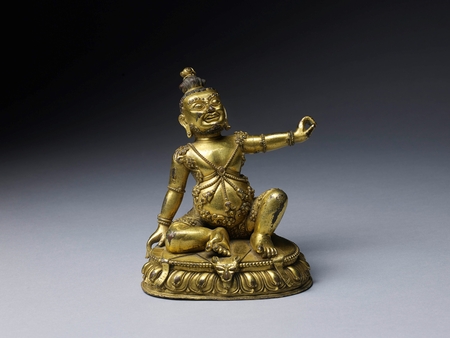Product Description
7008 A gilt bronze figure of Mahasiddha. The bearded figure with the broad smile, long earlobes and curly hair knotted in a high chignon is seated on an animal hide over a lotus base. His torso and hands adorned with sophisticated floral jewellery, he holds his left arm aloft.
China 18th century Qing dynasty
Dimensions: H. 16 cm (6¼”)
Mahasiddha, or great yogic adept Virupa, is said to have lived during the 9th century in northern India. He was one of many who chose a reclusive lifestyle and to live alone or with a consort; these figures became renowned for their unconventional lifestyles. They were revered in Tibet as enlightened beings and often feature in Tibetan lineages as the teachers of Tibetans who journeyed to India to receive Buddhist initiation.
The radical teachings of Mahasiddhas were significant in the origins of Tibetan Buddhism, which became favoured at the court of the Emperor Yongle (1403-1424) a devout Buddhist himself and were produce in China from the 15th century. Metal sculptural representations of the Tibetan pantheon were sometimes exchanged with Tibetan religious leaders, with the intention of cementing newly made alliances.









